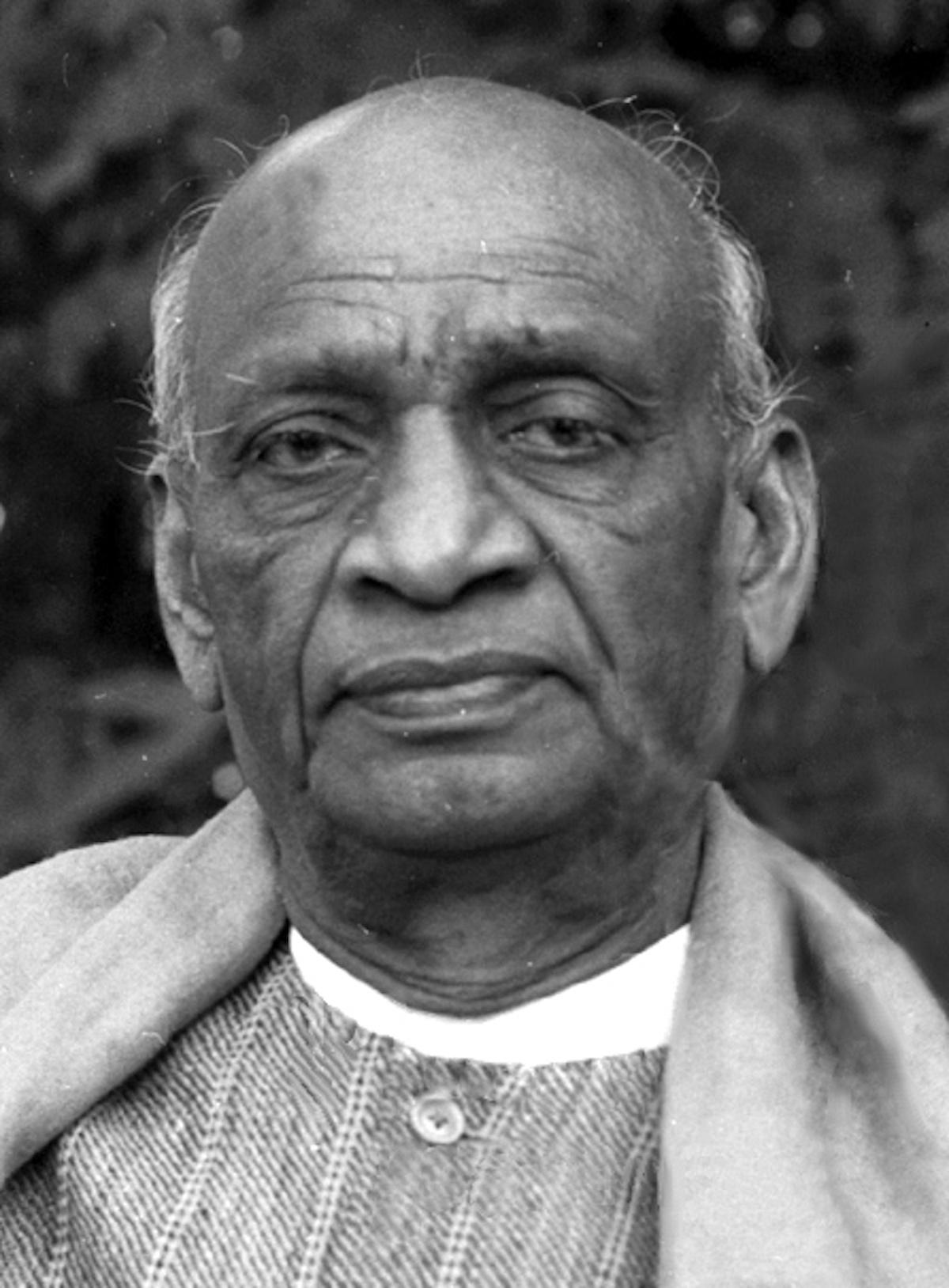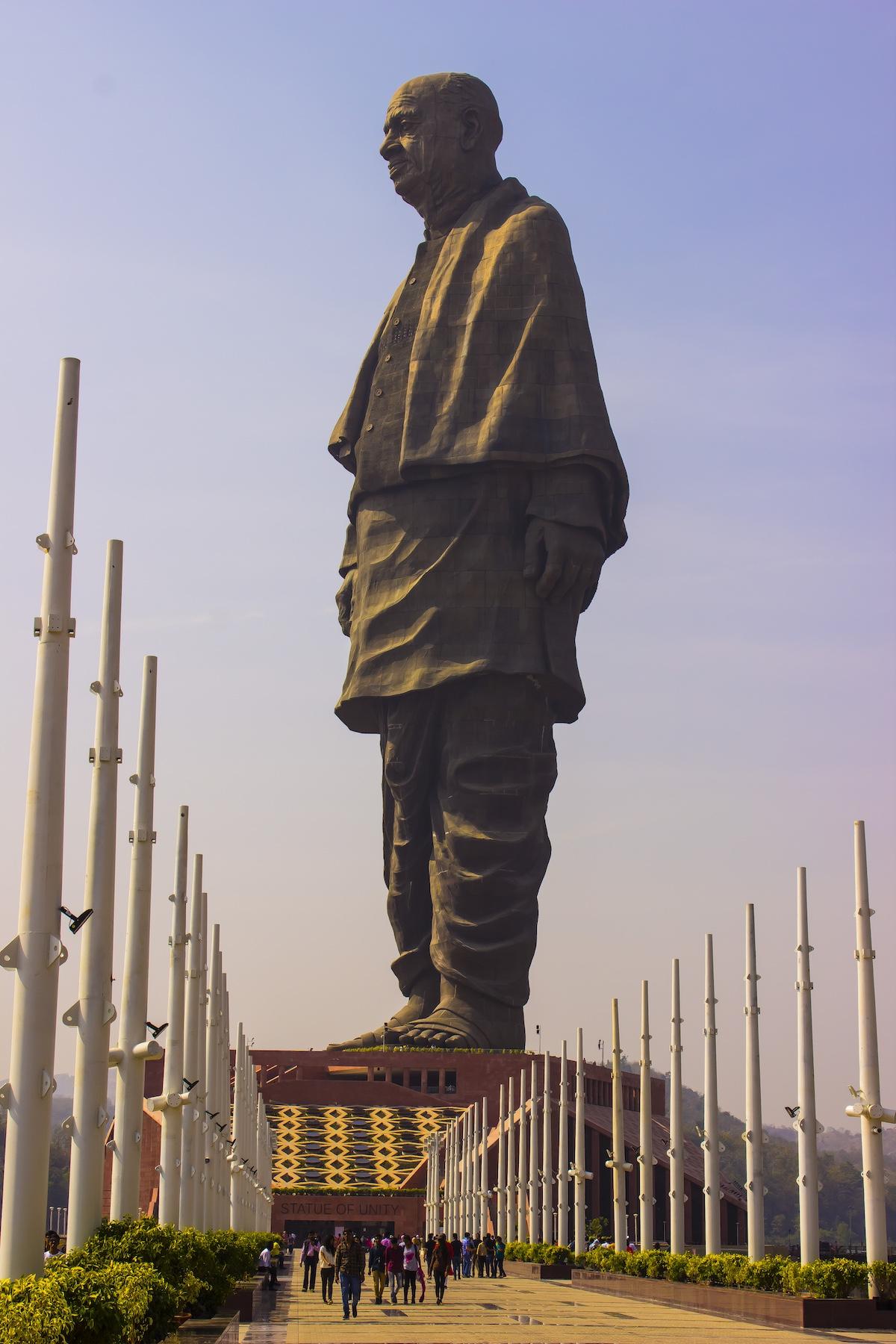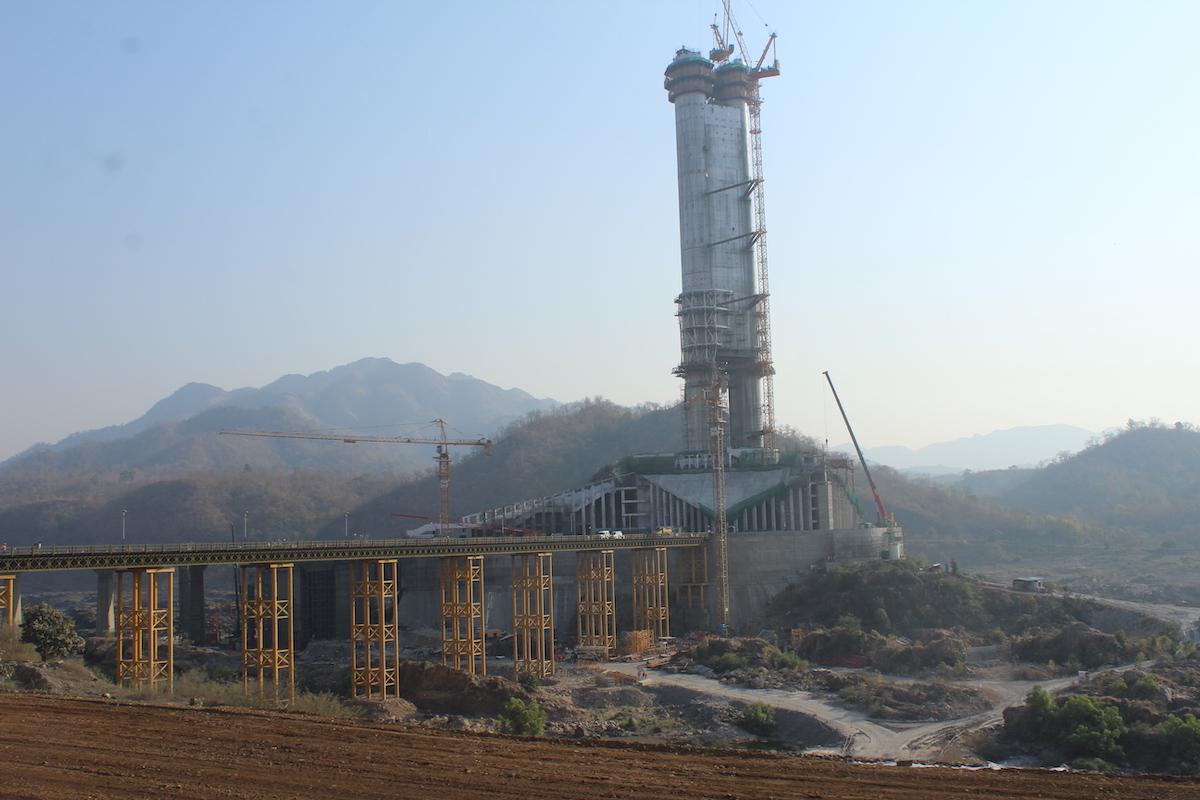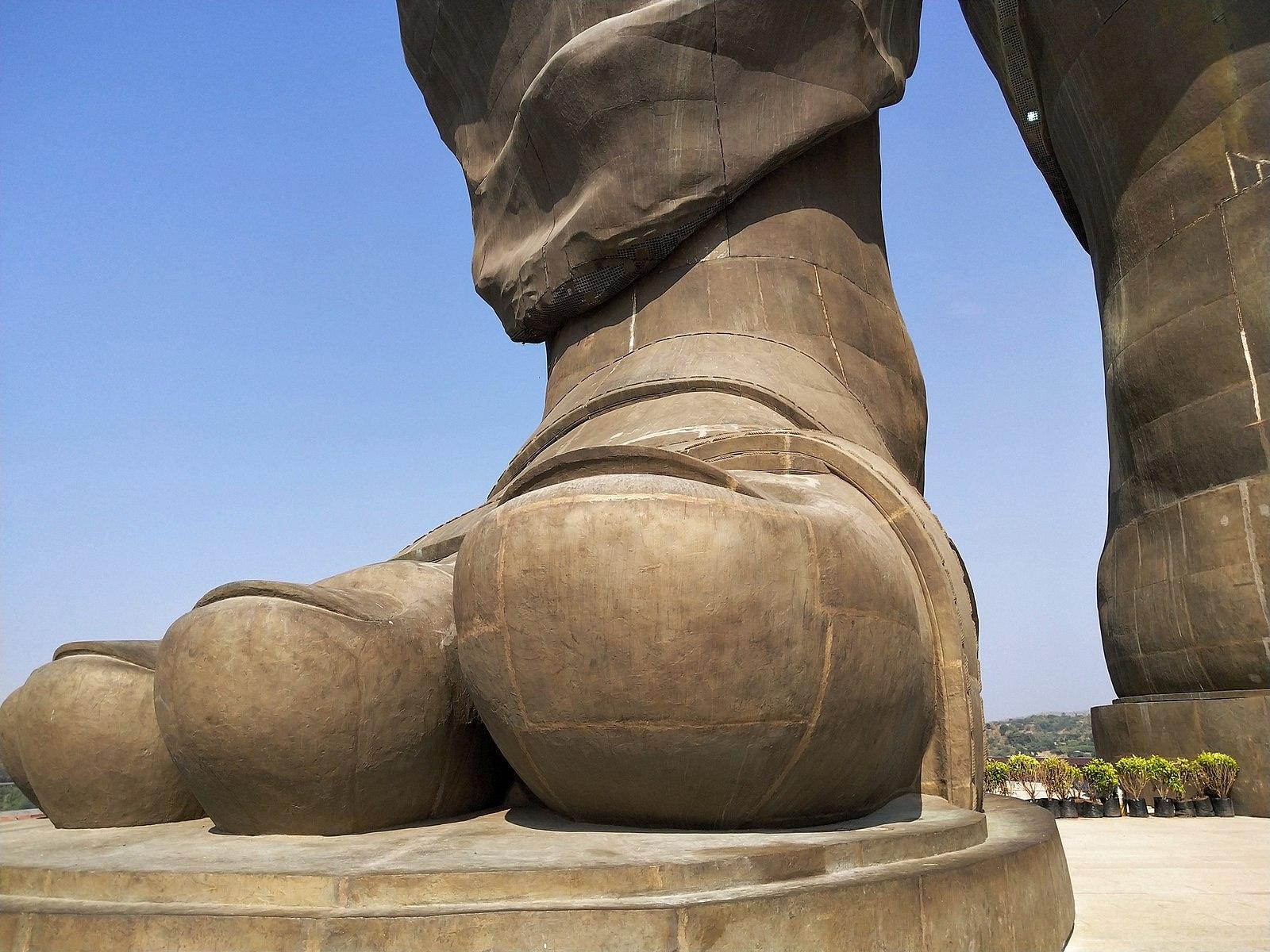Sutar was born in Gondur, a region of western India about two hundred miles northeast of Mumbai. Born into a Vishwakarma family—a social caste in India consisting of craftsmen, sculptors, stonemasons, carpenters, and metalsmiths. The Vishwabrahmin are believed to be descendants of the Hindu deity Vishvakarma, the architect of the devas, or the universe as a whole. Sutar created over one hundred and fifty monumental statues throughout his sixty-year career. His works tend to be of prominent figures in India’s sociopolitical landscape such as his monument of Mahatma Gandhi (1869-1948) which debuted in 2013. Sutar’s preference for Indian revolutionaries made him a perfect choice for sculpting Patel’s likeness in the Statue of Unity.
As the tallest statue in the world upon its completion in 2018, India’s Statue of Unity represents far more than a vanity project to reach incredible heights. The statue, designed and sculpted by Ram V. Sutar (b. 1925) celebrates India’s independence from British Colonial rule in 1947. The statue honors Indian independence activist and deputy prime minister Vallabhbhai Jhaverbhai Patel (1875–1950) not only for his triumphant activism that contributed to his nation’s freedom from colonial exploitation but for his service as India’s first prime minister.
Among Patel’s achievements was uniting the country as one "Union of India," which previously consisted of 562 princely states under the British crown and all of which had distinct styles of governance and cultural identities. To honor his work, Sutar and the rest of India have immortalized Patel in over 70,000 tonnes of steel, concrete, and bronze. Incredibly, the statue reaches up to 597 feet.

A portrait of Sardar Patel on his 74th birthday, 1949. 31 October 1949

Sardar Vallabhbhai Patel, Status of Unity
Patel was born into a Leva Patel family in 1947, a subcaste of the Patidar caste. In 1917, Patel began advocating for independence when he delivered a speech in Borsad, in his native region of Gujarat, urging his fellow countrymen to sign Gandhi’s petition demanding swaraj, or self-rule, from Great Britain. In the early twentieth century, one of the biggest issues facing India at the hand of Britain’s colonial chokehold on the nation was veth, forced servitude of Indians across Europe.
At Gandhi’s request, Patel took up activism in regions such as Kheda that were struggling with plague and famine. Across Kheda, Patel interviewed peasants and collected a list of grievances, which he used to convince Indians to revolt against Britain by not paying taxes. This effort was supported throughout India’s Congress and Britain waived taxes for the following year, solidifying Patel as a hero of the Gujarati region, which he served as secretary of the Gujarati Sabha in the Indian National Congress.
Patel worked alongside Gandhi for causes such as the Dandi Salt March, a twenty-four-day march that served as a nonviolent campaign of tax resistance, for which both men were arrested. Patel and Gandhi’s arrests brought wide-scale attention and support to their activism efforts since the two were becoming increasingly embraced by Indian politicians and citizens alike.

The statue under construction in January 2018
Patel and Gandhi’s activism reached a tipping point during World War II at the Bombay session of the All India Congress Committee. Here, Indian Congress launched a mass protest that landed almost all of India’s internal government leaders in prison, only hours after Gandhi gave his “Do or Die” speech. The day prior to Gandhi’s speech, however, Patel delivered an address demanding an end to British colonial rule in India.
This speech arguably set the stage for Gandhi’s speech, as well as for the nationwide protests that broke out across India after Patel, Gandhi, and most of the Indian Congress were jailed. In June of 1945, Patel was released from prison, upon which Britain began measures to transfer power to a democratically elected Indian government. Prior to integration, the Indian government struggled with the conflict between Hindu and Muslim leadership, which ultimately weakened the Indian government prior to the creation of Pakistan, a region consisting of India’s largest Muslim provinces.
The creation of Pakistan allowed India’s government and national identity to become more united than before. During the transition of power, Patel was praised for his efforts in quelling disorder and violence and calling for a secular government that didn’t allow for religious conflict to drive policy. By uniting the 565 princely states after India gained its independence from Britain, Patel secured his role in modern Indian leadership, serving as deputy prime minister for three years alongside prime minister Jawaharlal Nehru (1889-1964) in 1947. When Patel became a close associate of Mahatma Gandhi, he believed so much in the cause to liberate India from British control that he left his career as a lawyer, as well as any material ambitions, behind to fight for his people. Patel’s activism solidified him as a hero, yet his greatest achievement arguably lies in uniting India’s princely states to create one "Union of India."





























